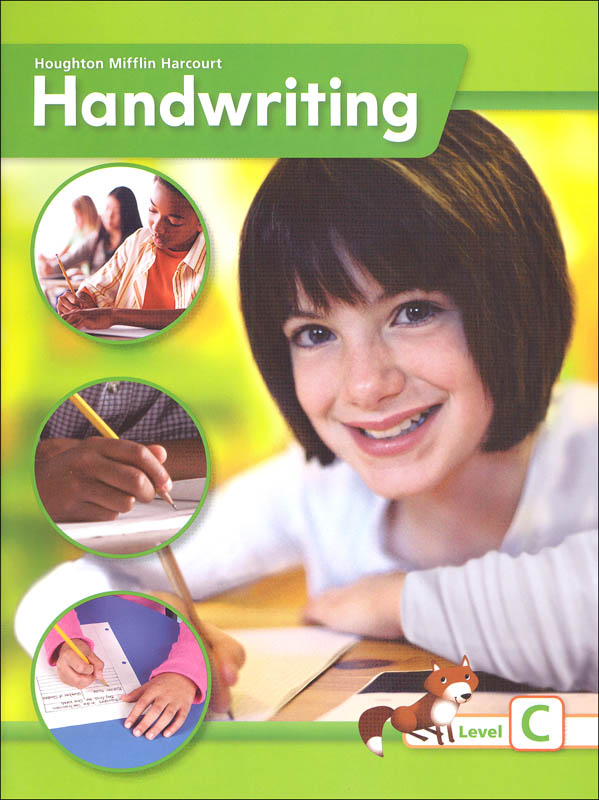Most educators agree that
handwriting is still foundational to many subjects, even with the advent of the
computer. The HMH handwriting series is a versatile program, providing two
approaches identical in structure and progression (down to the exact page),
with regular practice and evaluation (every 6-8 lessons). For the first three
levels, you can select from one of two options. A Ball
& Stick method follows a more traditional approach,
teaching handwriting by its individual parts. A second option, the continuous
stroke method (modern style) uses a manuscript where
letters have curved strokes at the end of each letter. This approach can often provide
a smoother transition to cursive.
Beginning with
Kindergarten (the Starter Level) teaches strokes – top/bottom,
over/under/through, left to right, curved and line strokes. Workbook pages
teach letter recognition, numbers 0-10, number words in English and Spanish,
the question mark and period, and letters by stroke groups. The book is divided
into groups of lessons and there is review and evaluation at the end of each
group. There are 94 horizontal pages, lessons are only one page each, and
children begin writing words and phrases at the lesson 25 evaluation. Students
practice writing short sentences beginning with lesson 46. Includes 71 lessons and
94 pgs.
Level
A begins with review of both lower- and
upper-case letters, strokes, spacing, and smoothness. Lessons 15-19 review
numbers, just the digits - not the words. Lesson 20 and forward practice
handwriting with letter formation, words, phrases, and sentences. Includes 82
lessons and 94 pgs.
Cursive letters are
introduced in lesson 37 of Level B. Children begin
by matching and comparing manuscript and cursive letters and words; cursive
connector strokes in lessons 43-45; begin writing letters in cursive in lesson
48; practice cursive words in lesson 50; phrases begin with lesson 60; and
complete sentences in lesson 74. Includes 102 lessons with additional practice.
126 total pgs.
Level C starts with a review of manuscript and cursive letters, matching and
transposing from one to the other, undercurve, overcurve, and cross-stroke
connections. Starting in lesson 14, lessons will alternate between lowercase
and uppercase practice. Instructions on how to form the letter will follow with
lines to practice and perfect it. The bottom of each page will include
exercises of copywork with words and sentences provided. There are a total of
79 lessons and 9 evaluation pages. In a school year, a suggested schedule could
be to practice penmanship every other lesson or three times a week.
Level D helps students transition to writing properly on notebook paper.
Further practice of connecting tricky letters is reviewed. Copywork of
sentences and paragraphs will reinforce what has been learned. Starting on
lesson 30, students will practice with proofreading, writing letters,
addressing envelopes, book reports, thank you notes, and more. There are a
total of 76 lessons and 9 evaluation pages. In a school year, a suggested
schedule could be to practice penmanship every other lesson or three times a
week.
The Starter, A and B
levels in either option
use a horizontal orientation, while levels C and D are
vertical (94 pgs.). No teacher editions are necessary; all instruction is
included in the student material.


